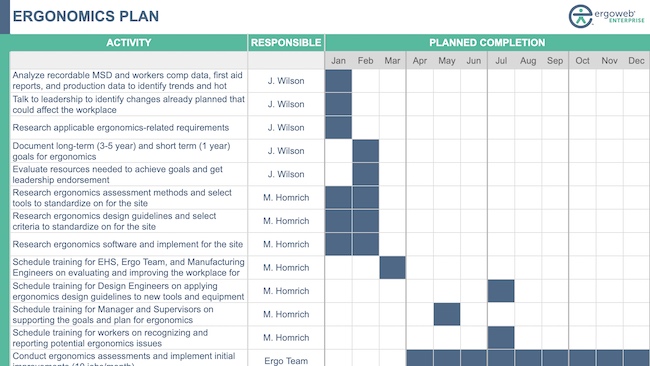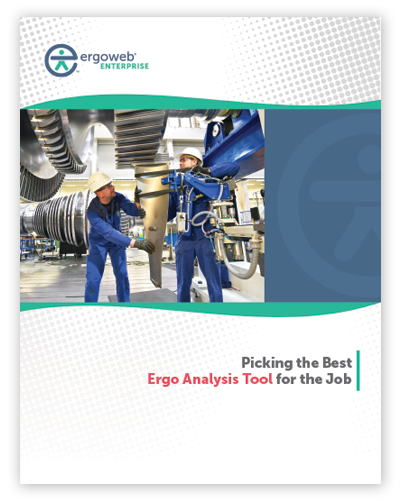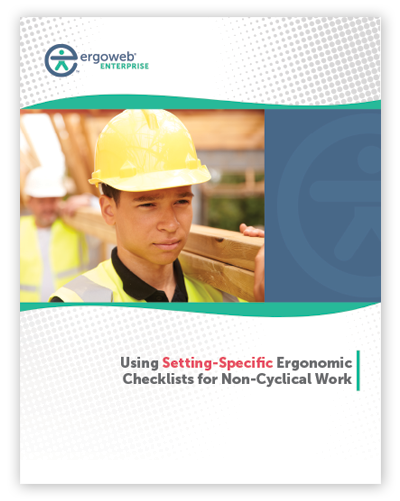Ergoweb® Learning Center
We’ve published and shared thousands of ergonomics articles and resources since 1993. Search by keyword or browse for topics of interest.
Downloadable Guides
Open Access Articles
June 18, 2012
There are many potential benefits from sit-to-stand and user adjustable furniture, including lower total cost of ownership, fewer MSD's, higher productivity, improved satisfaction, etc. However, to get the greatest benefit for the employee and the company, you need to ensure that you deploy the right equipment to the right population, and then support roll-out by giving users encouragement and guidance in how to be comfortable and successful with the new equipment. This article provides background for the benefits of sit-to-stand workstations, and guidance on how to effectively implement them on a small or large scale basis.
June 7, 2012
In this article, originally published in 2009 in The Ergonomics Report, journalist Jennifer Anderson describes a campaign to persuade intensive care physicians and surgeons that the humble checklist offers an effective means of reducing medical errors and complications. The World Health Organization added its weight to the effort. Has your hospital implemented such basic, necessary and straightforward ergonomics as a means to improve patient care and outcomes?
June 7, 2012
Guest contributor Janet Peterson, PT, DPT provides a concise, useful guide to keyboard trays as a means to add adjustability to a fixed height desk or work surface. She provides actionable advice on when a keyboard tray may be the right solution, what "must-have" features to look for, and which optional features will improve workstation ergonomics. She also offers considerations for corner and "U" shaped work stations, and provides wise words of caution regarding keyboard trays advertised as "sit/stand" or "sit-to-stand".
May 31, 2012
Ease of use and patient satisfaction were just two of the factors that influenced the Institute of Ergonomics & Human Factors (IEHF) to award their 2012 Ergonomics Design Award (EDA) to the V.A.C.Via
May 31, 2012
Musculoskeletal Disorders (MSDs) are among the leading causes of morbidity among working aged adults and armed service members. The most common cause for medical evacuation in the Iraq war was an MSD, and MSDs are also quite common in basic training. Functional Movement Screening (FMS) is thought by many to offer a new paradigm for predicting MSDs. However, in this study, the first large scale to test the predictive validity of this hypothesis, the results indicate FMS is not a reliable predictor of future injury, or at least not in the military population studied. This article is republished from The Ergonomics Report.
May 29, 2012
Peter Budnick reviews a 2010 study that investigates spinal pain among 11 to 14 year old school children in New Zealand. Even if you don't have children or work with them as part of your ergonomics work, the statistics in this research are revealing. Of course, children grow up and will soon be adults attending universities and assuming jobs, perhaps in your workplace. Are there trends that could lead to more back pain sufferers in the future?
May 16, 2012
Republished from The Ergonomics Report, this article reviews a study that identifies psychosocial risk factors that predict worker absenteeism and presenteeism. Psychosocial risk factors of work demands, social climate, and employee commitment to the organization were related to sickness absence in a prospective study of 2095 Swedish employees. The 3.5 year investigation found that when companies improved these risk factors, sickness absence was reduced.
May 15, 2012
Peter Budnick reviews recent research directed at helping security screeners recognize human verbal and non-verbal behavior that indicates deception. Specifically, the researchers conducted experiments in which participants were grouped into pairs of truth-tellers and liars. The interviewers were blinded from knowing which groups were telling a true story and which were being deceptive. Subsequent video analysis of behavioral metrics suggested behavioral cues that real-world security screeners might be able to recognize when interacting with two or more conspirators, including language/word use characteristics and visual cues like eye gaze patterns. The research demonstrates the breadth of ergonomics/human factors profession, as well as its diverse value to society.
May 10, 2012
Drawing on 40 years of his own experience -- and noting that last year was OSHA's 40th anniversary -- well-known ergonomist Dan MacLeod presents his vision for OSHA reform, particularly when it comes to ergonomics. "During this time, OSHA generated striking improvements in working conditions, but has to my mind been simultaneously plagued by its approach to enforcement ... My experience gives me a sense of optimism that there are better ways to regulate industry. The premise of ergonomics is that with good design we can simultaneously improve human well being and increase overall efficiency. I suspect this principle applies to Federal regulations and agencies as much as it does to powered hand tools and production lines."






